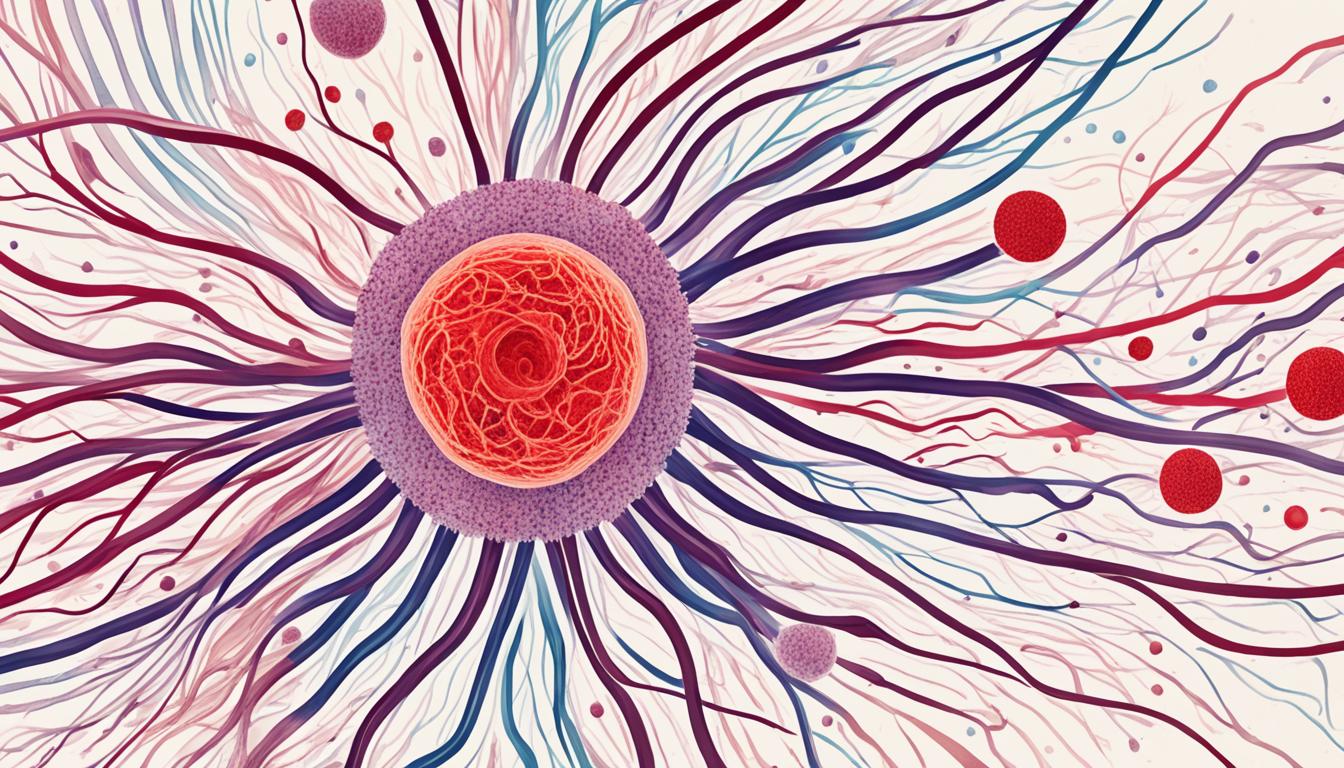Impetigo is a skin infection that mainly affects kids aged two to five. It comes from Staphylococcus or Streptococcus bacteria. You can spot it by a blister that bursts, leaving a crust. This infection passes easily through skin contact or touching sores.
It often happens in warm, damp places. Doctors can usually tell just by looking. They might treat it with an antibiotic cream. If it’s serious, you might need to take antibiotic pills. Scientists are also studying how stem cell therapy could help fight impetigo.
Causes and Clinical Symptoms of Impetigo
Staphylococcus aureus and Streptococcus pyogenes are the usual culprits. These bacterias get in through small cuts on the skin. When certain toxins are involved, it can lead to blisters with layers of skin coming apart. This is called bullous impetigo. Mainly, you’ll see it on faces, hands, and around the nose and mouth.
At first, you might see pink spots that turn into blisters. After the blisters break, they leave behind a darker spot. In some cases, impetigo can lead to serious problems like glomerulonephritis, cellulitis, and scarlet fever.
Diagnosis, Treatment, and Prevention of Impetigo
To figure out if it’s impetigo, doctors look for its typical signs like vesicles and crusts. They might also test the sore for bacteria. For less severe cases, they’ll recommend a cream with antibiotics. But, if it’s bad, you might need antibiotics you swallow.
Keeping the infected area clean and covered is important for healing. To stop it from spreading, wash your skin every day, use antibacterial soap, change clothes often, and steer clear of infected people.
Key Takeaways:
- Impetigo is a contagious skin infection primarily affecting children.
- Caused by Staphylococcus or Streptococcus bacteria.
- Symptoms include blister-like lesions with a honey-colored crust.
- Diagnosis is based on observation, while severe cases may require lab tests.
- Treatment involves antibiotic ointments or oral antibiotics.
- Prevention includes good hygiene practices and avoiding contact with infected individuals.
Causes and Clinical Symptoms of Impetigo
Impetigo is a common skin infection that’s very contagious. It’s mainly caused by bacteria like Staphylococcus aureus or Streptococcus pyogenes. Different types of impetigo have different causes. For example, nonbullous impetigo often starts when bacteria enter small skin wounds. This type is linked to group A beta-hemolytic streptococcus, staphylococci, and/or streptococcus.
Bullous impetigo, the other kind, is caused mostly by a special toxin from staphylococci. This toxin leads to the formation of blisters and the top skin layer separating off.
At first, impetigo shows up as pink spots called macules on the skin. These might turn into vesicles or small fluid-filled blisters. After that, they could become filled with pus. When these break, scabs form. Healing from this can leave behind dark spots.
Impetigo is found often on the face, hands, and natural openings like the nose and mouth.
Impetigo can cause other problems if not treated, like glomerulonephritis, cellulitis, and scarlet fever. Ecthyma is a more serious type that goes deep into the skin and may form ulcers.
Comparison of Nonbullous and Bullous Impetigo
| Nonbullous Impetigo | Bullous Impetigo |
|---|---|
| Caused by group A beta-hemolytic streptococcus, staphylococci, and/or streptococcus | Caused by exfoliative staphylococcal toxin |
| Small wounds in the skin allow bacteria to enter | Formation of blisters and superficial layer dissection |
| Commonly affects open skin areas like the face, hands, and feet | Commonly affects open skin areas like the face, hands, and feet |
In short, impetigo is mostly caused by Staphylococcus aureus or Streptococcus pyogenes. Various bacteria can start nonbullous impetigo by entering through small skin injuries. Conversely, bullous impetigo is often due to the exfoliative staphylococcal toxin. Initial symptoms include pink spots turning into blisters and then pus-filled bumps. Leaving it untreated can lead to problems like glomerulonephritis and cellulitis.
Diagnosis, Treatment, and Prevention of Impetigo
Diagnosing impetigo starts with seeing its symptoms. These include vesicles, pus-filled blisters, and crusts that are honey-colored. Doctors might also do tests like bacterial staining to check for bacteria.
To treat impetigo, milder cases could be managed with special ointments. But, severe cases might need oral antibiotics. It is important to finish the whole course of antibiotics as the doctor says.
Good skincare habits are also important for healing. This means washing the area gently and covering it. To stop impetigo from spreading, good hygiene is key. Use antibacterial products, change clothes daily, and avoid contact with infected people. This lessens the chance of getting impetigo.

